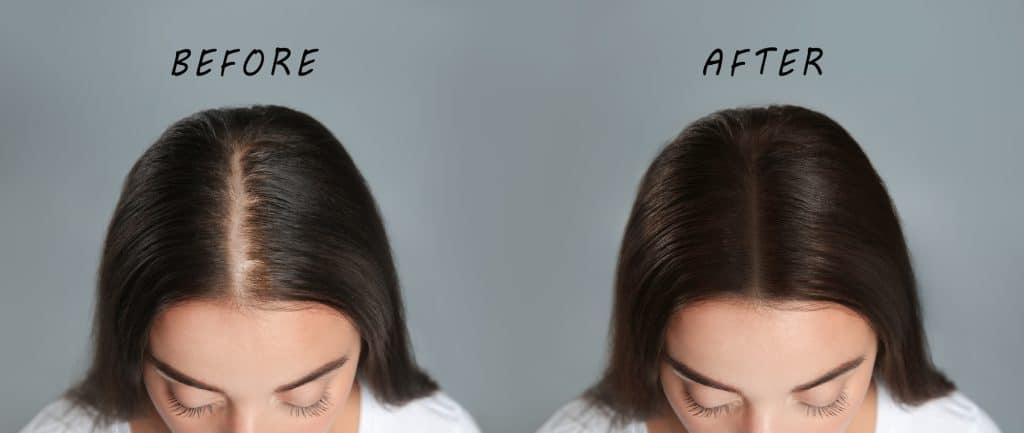Have you noticed more strands than usual on your hairbrush lately? Do you obsess over your receding hairline or thinning crown in the mirror?
If so, you’re not alone.
For many people, losing their hair can feel like losing a part of their identity. But take heart – there are solutions that can help restore your locks and your confidence.
In this comprehensive guide, we’ll walk through the common causes of hair loss, when to see an expert, and proven treatments that can breathe new life into your tresses.
Understanding Why Your Hair is Thinning
The first step is getting to the root (pun intended!) of the problem. Hair loss happens gradually, but there are typically underlying causes. Being aware of them can help you and your doctor create an action plan. Here are some of the most common culprits:
Genetics – Also called androgenic alopecia, this hereditary condition causes hair follicles to shrink over time. It’s the leading cause of male and female pattern baldness.
Aging – As we get older, hair follicles slow down production. In fact, studies have shown that 85% of men over 50 and 38% of women older than 70 are likely to develop this condition. However, some research has discovered that it affects up to 32% of females over 20.
Stress – When we’re chronically stressed, more hairs than normal enter the shedding phase.
Medical conditions – Certain medical conditions and medications can contribute to hair loss. These include hormonal imbalance, lupus, thyroid disorders, and syphilis, among others. Chemotherapy can also cause excessive hair fall.
Medications – Certain prescription drugs and treatments like chemotherapy.
Poor nutrition – Diets lacking protein, iron, zinc and other nutrients impact hair health.

Consulting a Specialist for a Customized Plan
Now that you know why people lose their locks, it’s essential to see a dermatologist or hair restoration expert.
They can examine your scalp, diagnose the exact cause of men’s and women’s hair loss, and create a personalized treatment plan.
Don’t try to self-diagnose or treat hair loss on your own! A professional assessment is the only way to determine what’s right for your unique situation.
Weighing Your Hair Restoration Options
Once you know why your hair is thinning, you and your doctor can explore solutions. Here are some of the most popular ways to revive your mane:
Non-surgical treatment procedures
These approaches work best if you can’t commit to an invasive hair loss treatment, including a hair transplant.
Topical hair loss medications
Minoxidil and finasteride are Food and Drug Administration or FDA-approved medications for hair loss caused by androgenic alopecia. Minoxidil stimulates hair follicles, while finasteride blocks dihydrotestosterone (DHT), a hormone that contributes to hair loss in men. You have to religiously apply them to the affected area to get results.
Pros: It’s non-invasive and readily available.
Cons: Results may take months, and it requires ongoing use for maintenance. This treatment may not be suitable for everyone, especially pregnant or breastfeeding women.
Laser therapy
Low-level laser therapy (LLLT) exposes the scalp to low-intensity laser light. While the exact mechanism isn’t fully understood, LLLT is believed to increase blood flow and stimulate hair follicles, potentially promoting hair growth. A small study showed a 53.8% response in individuals with certain health conditions.
Pros: It’s painless and non-invasive, and some studies have shown promise.
Cons: Results may vary from person to person. Like topical medications, this requires multiple sessions and ongoing maintenance.
Platelet-rich plasma (PRP) therapy
PRP therapy is a relatively new and innovative approach to hair restoration. It involves extracting the platelet-rich plasma from your blood and injecting it into the scalp. The growth factors in the plasma are thought to stimulate hair follicles and promote new hair growth. This treatment is typically combined with other hair restoration methods for optimal results.
Pros: It’s minimally invasive, using your body’s healing potential.
Cons: Research is ongoing, showing varied results. PRP therapy can be expensive for some, costing as much as USD$ 2,500, depending on factors like your location, the types of equipment used, and the treatment components required.
Scalp Micropigmentation (SMP)
SMP involves using specialized needles to deposit pigment into the scalp, creating the appearance of tiny hair follicles. This technique can help camouflage thinning areas, restore the appearance of a fuller hairline, or even create the illusion of a closely shaved head for those experiencing severe hair loss.
Pros: It improves your appearance almost instantly and doesn’t require downtime.
Cons: SMP doesn’t address hair loss, much like wearing hair extensions. You must find a skilled provider and undergo two to three sessions for great results.
Surgical solution
If non-surgical methods haven’t yielded the desired results or if you’re experiencing more advanced hair loss, an expert may recommend hair transplantation. This procedure involves harvesting hair follicles from your scalp areas resistant to balding and transplanting them to the thinning or bald areas.
There are two primary techniques: Follicular Unit Strip Surgery (FUSS) and Follicular Unit Transplantation (FUT). The choice depends on factors such as the extent of hair loss, your hair characteristics, and your personal preferences.
Pros: Both methods can provide long-lasting and natural-looking results.
Cons: This surgical procedure requires recovery time and is only ideal for some, depending on scalp laxity and donor availability. Running from USD$ 4,000 to USD$ 15,000, it can also be costly to most.
Being Patient on the Road to Hair Recovery
Reviving your hair takes time and commitment, but the boost to your confidence is priceless. With an expert’s help and proven treatments, you can restore your lush locks.
Stay patient – it may take months to see significant improvement. But trust the process. With consistent care, your mane will be back to its former glory.
The first step is booking a consultation.


